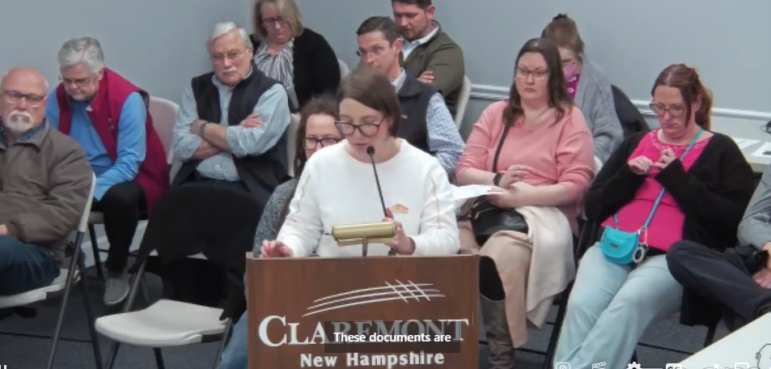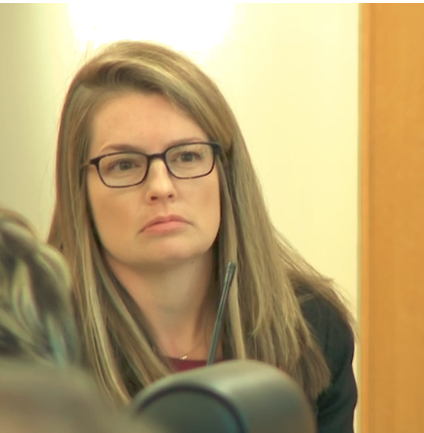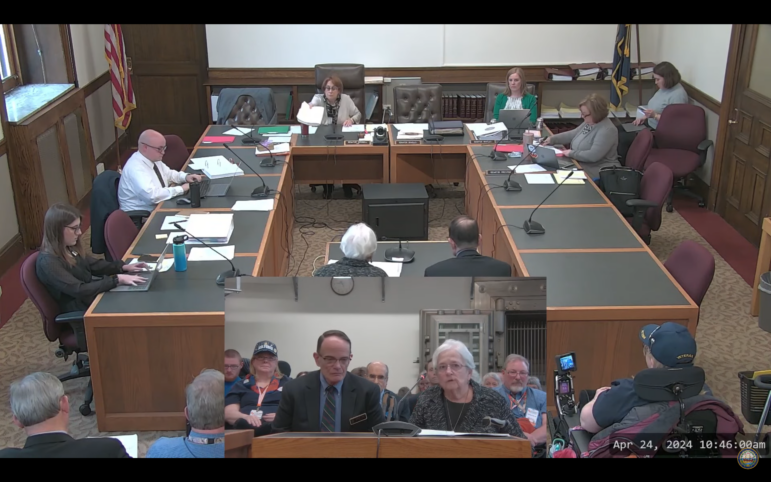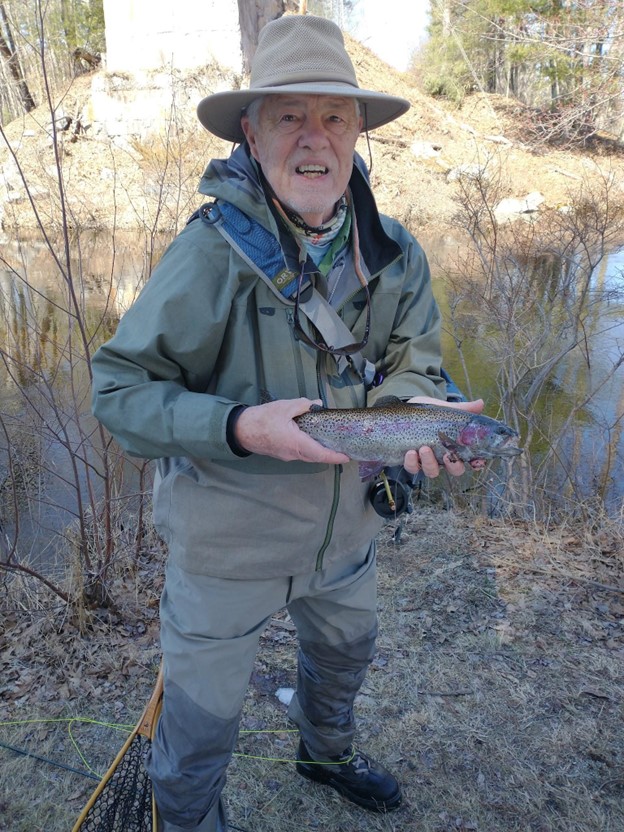Fifty years ago, the Wire Service Guild (AFL-CIO), the union representing employees of The Associated Press in the United States, struck AP, the first and so far only, strike against the company. The following three recollections are by staffers who walked out on January 8, 1969. One is by Adolphe Bernotas of Concord, N.H., who remains active as a 54-year union member; the second by the president of the union at the time, Malcolm Barr; and the third by an activist who became president of WSG, Lyle Price.
By ADOLPHE BERNOTAS
For me the 1969 Associated Press strike lasted eight incredibly cold New England days.
I was 27 years old and had joined AP less than two years earlier. The Concord, N.H., bureau had two newspeople and one Teletype operator. We were in the building of the Concord Monitor, touted as the state’s most “liberal”’ paper (which had busted the typographical union). Its publisher, an AP board member, threatened to have me arrested if I picketed the building.
I ignored him. Would get up at 4:30 a.m. (one morning we faced a record 27 degrees below zero) to be in front of the building to keep the operator from crossing my one-person “line.” The operators, members of the Commercial Telegraphers Union, were told to report to work if there was no picket, but if there was not to cross. (The other news guy, Correspondent Carl Clement Craft, went home to Indiana on vacation).
While the liberal newspaper threatened to arrest me, the ultraconservative Manchester Union Leader (whose publisher insisted that his newspaper be unionized) asked me to cover a few legislative hearings – at union pay.
Once the operator showed up at the building, and I kept him from crossing my “line,” we would stop at the Dunkin’ Donuts then drive 150 miles one way to Montpelier, Vt., to picket that bureau, one of whose news guys worked during the strike. Then we’d drive home and do it again the next day. I received about $35 a week in strike benefits.
The AP report during the strike, these days called the “product,” was atrocious; the A-wire essentially was briefs. The evaporated New Hampshire state report – produced by Boston managers – was embarrassing.
The strike ended when the operators went back to work. And then as now and in all contract talks, we had nonmembers demanding good contracts without paying for them with union dues.
Among the benefits won in that strike was a 37½-hour week for night, overnight and Sunday staffers; cost-of-living protection in the third year of the contract; additional company contribution to health insurance cost; third week of vacation after four years’ service; fourth week after nine years; and an employee birthday as a paid holiday;.
More importantly, the strike energized and mobilized a new generation of Guild leaders responsible for the union’s lawsuit that opened AP to women and minorities, which the company fought and one executive declared it Pearl Harbor Day.
At the time, AP was run by white guys; it had very few women and even fewer minorities. One bureau chief referred to an African-American staffer by the n-word. Malcolm Barr recalls that during the 1968 riots, there was but one African-American newsman in the Washington bureau – Austin Scott – who later joined The Washington Post. The AP threatened to fire me unless I shaved my “beatnik” goatee. I didn’t and my union fought and won my grievance.
AP eventually settled the lawsuit by signing the consent decree to expand the hiring and promoting of women and minorities. It was a monumental victory.
In addition to opening AP to women and minorities, the union later achieved domestic partner health insurance coverage, expanded maternity-paternity leave (which the AP fought and then took credit for the benefit). And the union made gains in the life of AP staffers and their families, be it bereavement leave or lunch hours at the option of the employee, not employer.
I don’t know if my recollections of the strike offer wisdom or inspiration. Nothing is won easily. Labor didn’t abolish child labor, secure the 40-hour workweek or win the weekend for the middle class without struggle, sometimes bloody and deadly.
My message is that the union is forever and we are one, or as St. Paul said, “We are all one of another.”
(Before he retired from AP in 2006, Bernotas served on every council in the local, negotiated at least a dozen contracts, served as president of the Merrimack County Central Labor Council and Concord Labor Temple Association, and as New Hampshire AFL-CIO delegate. After communism fell, he traveled to former Soviet countries [including his native Lithuania] in Europe and Asia on behalf of The Newspaper Guild and International Federation of Journalists promoting quality journalism and unionism. Bernotas had worked at three daily newspapers, Connecticut radio station and as managing editor of a Long Island weekly. He served on the board of Opera New Hampshire, hosted an opera program on New Hampshire Public Radio and was an aerobics instructor at the Concord YMCA. He is a lifetime member of the League of American Bicyclists and co-author of “30 Bicycle Tours in New Hampshire” [French edition in neighboring Quebec]. He is an active member of the Democratic Party in New Hampshire and Sarasota County Democratic Labor Caucus in Florida, where he and his wife, Marguerite Orazi, spend winters. He was a founding board member of the New Hampshire chapter of the Alliance for Retired Americans, is in his second term as national vice president of the CWA Retired Members Council and serves as NMG retiree coordinator.)
By Malcolm Barr Sr.
I was amazed when retired AP staffer Lyle Price and former president of the Wire Service Guild, out of the blue, reminded me that on January 8, 2019, it will be 50 years since I stepped away from 50 Rockefeller Plaza in New York City with an “on strike” sign around my neck. I was 35 years old, a neophyte Washington AP correspondent and the leader of a nationwide work stoppage.
I recall a bitterly cold day, blustery wind, and the possible onslaught of the flu. A handful of New York AP staffers joined me, as did hundreds of newsmen — we all were newsmen in those days — on the eastern seaboard, as the strike spread to all bureaus in all states from Maine to my old “Hula” bureau in Hawaii. At the time, I reported from the U.S. Department of Justice beat in Washington.
My numerical replacement in Hawaii, Buck Donham, called to tell me he was on the sidewalk, 6,000 miles away, in front of the News Building in Honolulu, and that Honolulu Star-Bulletin staffers were refusing to cross his picket line of just one Guild member!
The next personal call was from the late Jim Lagier, retired Tokyo bureau chief and longtime AP management executive, to tell me he was on the sidewalk in Los Angeles “and this is to respect you, my friend.” Lagier and I were together for five years in the Honolulu bureau and bonded throughout our lives.
The next call I got was from my then wife in Washington asking if I needed anything. “Yes, warm clothes and bring the dogs. We’ll be here for awhile,” I responded. She arrived the next day with our two pekingese in her arms along with my overcoat.
I have hazy recollections of the days that followed. I know I ended up outside AP’s Connecticut Avenue bureau in Washington a few days into the strike, but I do have a better memory of how I got to be president of the Wire Service Guild, Local 222.
As a former military writer with the Honolulu Star-Bulletin, and a stringer for “Navy, the Magazine of Sea Power,” I’d actively sought a transfer to Saigon in the mid-1960s, hoping to hook up with old colleagues. In 1967, I was sent in the opposite direction — to Washington D.C.
I was one of 20 or so younger staffers from around the country to arrive in Washington at about the same time and word got around that “the guy from Honolulu is a Brit and a former member of the National Union of Journalists.”
Two seasoned Washington bureau staffers, Barry Schweid and White House reporter Frank Cormier, approached me sometime in 1967 about taking the position as chairman of the Washington AP chapter. Citing my connection with the esteemed and historic British journalists’ union, they thought I could pump some life into the somewhat moribund Washington WSG membership. Tom Stewart, another Washington bureau newcomer, was enthusiastic enough to become treasurer on my board and later national treasurer. Stewart later crossed town to the Reuters news agency.
During the first weeks of my election, WSG business manager Ray Mann arrived in WX from New York to meet me. He gave me a backgrounder on the aims and objectives of the Guild and wished me luck in my new job as chapter chair, Shortly, Schweid was back at me with a proposal. An election was upcoming in 1968 for national president. He and Cormier and several others, pointing out that to date New York UPI photographer George Muldowney was running unopposed, that I should throw my hat in the ring “so that you will get name recognition, and you can run with a good chance of winning next time around.”
The aim was to wrest the position from New York and into AP Washington. So, on this premise, I agreed. Muldowney dropped out. I was automatically in. No-one had bothered to tell me that a strike vote was imminent or maybe already taken. However, I inherited a place at the negotiating table in the 1968 contract talks and the leadership of the eight-day strike.
The rest is history.
(Malcolm Barr left AP shortly after the strike. He accepted a post as press secretary to Sen. Hiram L. Fong (R-Hawaii). He later held public and government affairs management positions in the departments of Labor, Justice and Commerce in Washington, D.C. Now 85, he lives with his wife, Carol, in the Shenandoah Valley town of Front Royal, Va. The couple has a son, Malcolm, a USAF Iraq war veteran, a government contract worker in intelligence operations. Barr Sr., for 18 years, was a contributing writer and columnist for three local newspapers. For the past two years,he has contributed regularly to the Shenandoah Valley’s on-line news outlet, the RoyalExaminer.com. Between times, he ran for 21 years a string of Thoroughbred race horses mainly at tracks from New York to Florida, winning 130 races in 600 tries. In 2009, he published a book about his exploits called “1,000 to 1!”).
By Lyle Price
When I think about the eight-day nationwide strike at Associated Press by the Wire Guild in January of 1969 my favorite perspective now as then is that two Los Angeles AP staffers – newsman Bob Kerr and Teletype operator Don Hart – told me they made more money during that stretch by working on the waterfront (thanks to the Longshore Union’s good offices) than they would have at AP.
For an additional perspective, the pay on top scale (which likely both had reached) was $8 an hour for news people on top scale. Hart and Kerr also claimed it was OK to sample the ships’ wares – although I question if that was much of a fringe benefit on the banana boat they unloaded, since that stuff comes in green, I believe.
My other everlasting memory is that as a Seattle native who had come to expect better out of California, it rained every day on the Los Angeles strike line – which as the Guild’s unit chairman at LA, I set up several committees to handle such things as financial hardship cases and convincing (successfully) three staffers who initially continued to work to join the strike. To counter the weather – and to be easily recognized – I wore my yachting cap and spent more time at strike headquarters than on the line. My headquarters duties included getting daily status reports from John McSweeney, a Los Angeles AP photo editor who was on the Wire Guild negotiating committee in New York, and relaying John’s info to the strike line and via phone to strike leaders at San Francisco, Sacramento and Hawaii. Sadly, I was too busy to join Hart and Kerr on the waterfront, which I would have enjoyed (at least for a week).
There were various reasons cited for the strike, but basically I’d have to say that AP union members had faith that its negotiators and leaders had the best interests of the staff in mind and were competent. Such faith, I feel to this day, is a key to a successful union (and something that every union leader should work to obtain). And when I went from being a unit leader to serving as a two-term president of the Wire Service Guild and served in the next negotiations in 1972-73, I learned firsthand how daunting that task could be and what a responsibility it is. The only thing in my experience I can compare it to was situations I found myself in from time to time during my three years in the Army in the 1950s, an era when just about every man got a call to military duty.
Similar to how union leader Malcolm Barr of the Washington D.C. bureau fell into his post as Guild president not long before the strike began, I had been a sideline member until the unit chairman at Los Angeles AP took sick and asked me to take notes at a grievance session. This was in 1968.
When the Los Angeles unit chair quit AP not much later, I became the unit leader. Then, after not many more months, I found myself on strike – and am still asked at reunions and on email exchanges with old pals to reflect on it. I wish to recognize the roles of four AP staffers who were union members from the earliest days and I knew personally: The Wire Guild’s “father” Leonard Milliman (who signed me up the day I started in San Francisco AP in 1964); Bob Thomas the “everlasting” Hollywood writer and one of the union’s seven official founders; Cal Werner, long of the LA broadcast desk and my chief aide at strike headquarters; and the aforementioned John McSweeney, who became my mentor in union doings. Milliman was retired from AP the time of the strike, but I was told he reported for duty on the picket line.
(After being unit chair/strike leader at Los Angeles, Price held several national positions in the union, including two terms as WSG president. He left AP in 1976. He covered state/local politics and education for a daily paper in King County, Wash., for 17 years after that. Then, as a retired journalist, he served as an usher for nine years, including behind home plate at the Seattle Mariners ballpark. At the same time, he was a substitute teacher for a decade in a South King County School District – specializing in high school literature, history, and physical education. He left those endeavors to focus on polishing a collection of 30 short satirical short stories about societal/political cluelessness and working as a volunteer to rid local parks of blackberry bushes. He says he faces no shortage of targets in both of those continuing endeavors!)
At the time of the strike, WSG represented workers at AP and United Press International (against whom it prosecuted the only other strike in the local’s history, a 23-day walkout in the spring of 1974).
Since the strike, the Wire Service Guild has become News Media Guild, Local 31222 of The NewsGuild, Communications Workers of America, and represents United States workers at AP, UPI, Guardian US, and EFE, the world’s largest Spanish-language news agency.





